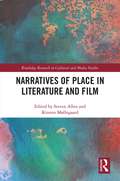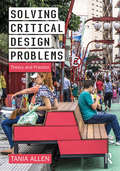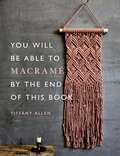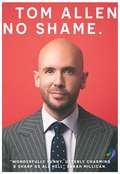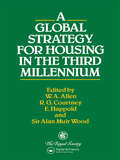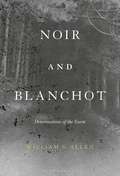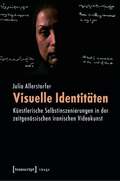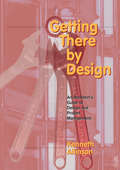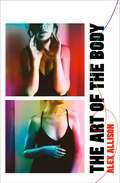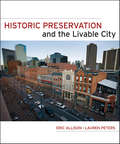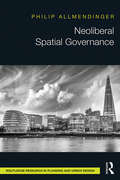- Table View
- List View
Narratives of Place in Literature and Film (Routledge Research in Cultural and Media Studies)
by Steven Allen Kirsten MøllegaardNarratives of place link people and geographic location with a cultural imaginary through literature and visual narration. Contemporary literature and film often frame narratives with specific geographic locations, which saturate the narrative with cultural meanings in relation to natural and man-made landscapes. This interdisciplinary collection seeks to interrogate such connections to probe how place is narrativized in literature and film. Utilizing close readings of specific filmic and literary texts, all chapters serve to tease out cultural and historical meanings in respect of human engagement with landscapes. Always mindful of national, cultural and topographical specificity, the book is structured around five core themes: Contested Histories of Place; Environmental Landscapes; Cityscapes; The Social Construction of Place; and Landscapes of Belonging.
Narratives of Place in Literature and Film (Routledge Research in Cultural and Media Studies)
by Steven Allen Kirsten MøllegaardNarratives of place link people and geographic location with a cultural imaginary through literature and visual narration. Contemporary literature and film often frame narratives with specific geographic locations, which saturate the narrative with cultural meanings in relation to natural and man-made landscapes. This interdisciplinary collection seeks to interrogate such connections to probe how place is narrativized in literature and film. Utilizing close readings of specific filmic and literary texts, all chapters serve to tease out cultural and historical meanings in respect of human engagement with landscapes. Always mindful of national, cultural and topographical specificity, the book is structured around five core themes: Contested Histories of Place; Environmental Landscapes; Cityscapes; The Social Construction of Place; and Landscapes of Belonging.
Solving Critical Design Problems: Theory and Practice
by Tania AllenSolving Critical Design Problems demonstrates both how design is increasingly used to solve large, complex, modern-day problems and, as a result, how the role of the designer continues to develop in response. With 13 case studies from various fields, including program and product design, Tania Allen shows how types of design thinking, such as systems thinking, metaphorical thinking, and empathy, can be used together with methods, such as brainstorming, design fiction, and prototyping. This book helps you find ways out of your design problems by giving you other ways to look at your ideas, so that your designs make sense in their setting. Solving Critical Design Problems encourages a design approach that challenges assumptions and allows designers to take on a more critical and creative role. With over 100 images, this book will appeal to students in design studios, industrial and product design, as well as landscape and urban design.
Solving Critical Design Problems: Theory and Practice
by Tania AllenSolving Critical Design Problems demonstrates both how design is increasingly used to solve large, complex, modern-day problems and, as a result, how the role of the designer continues to develop in response. With 13 case studies from various fields, including program and product design, Tania Allen shows how types of design thinking, such as systems thinking, metaphorical thinking, and empathy, can be used together with methods, such as brainstorming, design fiction, and prototyping. This book helps you find ways out of your design problems by giving you other ways to look at your ideas, so that your designs make sense in their setting. Solving Critical Design Problems encourages a design approach that challenges assumptions and allows designers to take on a more critical and creative role. With over 100 images, this book will appeal to students in design studios, industrial and product design, as well as landscape and urban design.
You Will Be Able to Macramé by the End of This Book (You Will Be Able to)
by Tiffany AllenIn recent years, macramé has gone from a nostalgic '70s trend to a mainstay in contemporary crafting, and no modern home is complete without a stylish knotted creation. This new book takes you back to complete basics, with clear step-by-step illustrations showing every knot you'll need in order to get started plus all the techniques, styles, tools and materials to take you from novice to pro. Once you've aced the essentials, move on to 20 clear, stylish and straightforward projects to practise the skills you've learned. By the end of the book, you will be able to macramé beautiful items to gift or keep, from a stunning wall hanging to a chic plant holder or a handy market bag.
No Shame: the hilarious and candid memoir from one of our best-loved comedians
by Tom Allen'Wonderfully funny, utterly charming and sharp as all Hell' SARAH MILLICAN'Tom Allen is one of the funniest comedians in the UK, the best dressed man I know and now it turns out he is a superb writer. I hate him'JOSH WIDDICOMBE'A delightful, touching side-splitter'JO BRAND'An absolute joy! Funny, witty and totally charming'ALAN CARR~~~~~'When I was 16 I dressed in Victorian clothing in a bid to distract people from the fact that I was gay. It was a flawed plan.'No Shame is a very funny, candid and emotional ride of a memoir by one of our most beloved comedians. The working-class son of a coach driver, and the youngest member of the Noel Coward Society, Tom Allen grew up in 90s suburbia as the eternal outsider.In these hilarious, honest and heart breaking stories Tom recalls observations on childhood, his adolescence, the family he still lives with, and his attempts to come out and negotiate the gay dating scene. They are written with his trademark caustic wit and warmth, and will entertain, surprise and move you in equal measure.
A Global Strategy for Housing in the Third Millennium
by W. A. Allen R. G. Courtney E. Happold A. M. WoodThis book outlines the emerging determinants, in a global context, for the provision of housing for the growing, shifting and changing populations. In doing so the reader will be encouraged to forsee the complementary evolution in the planning, design and construction of housing in the developed and developing world.
A Global Strategy for Housing in the Third Millennium (Technology In The Third Millennium Ser.)
by W. A. Allen R. G. Courtney E. Happold Alan Muir WoodThis book outlines the emerging determinants, in a global context, for the provision of housing for the growing, shifting and changing populations. In doing so the reader will be encouraged to forsee the complementary evolution in the planning, design and construction of housing in the developed and developing world.
Noir and Blanchot: Deteriorations of the Event
by William S. AllenIn dark or desperate times, the artwork is placed in a difficult position. Optimism seems naïve, while pessimism is no better. During some of the most demanding years of the 20th century two distinctive bodies of work sought to respond to this problem: the writings of Maurice Blanchot and American film noir. Both were seeking not only to respond to the times but also to critically reflect them, but both were often criticised for their own darkness. Understanding how this darkness became the means of responding to the darkness of the times is the focus of Noir and Blanchot, which examines key films from the period (including Double Indemnity and Vertigo) alongside Blanchot's writings (particularly his 1948 narrative Death Sentence). What emerges from this investigation is the complex manner in which these works disrupt the experience of time and the event and in doing so expose an entirely different mode of material expression.
Noir and Blanchot: Deteriorations of the Event
by William S. AllenIn dark or desperate times, the artwork is placed in a difficult position. Optimism seems naïve, while pessimism is no better. During some of the most demanding years of the 20th century two distinctive bodies of work sought to respond to this problem: the writings of Maurice Blanchot and American film noir. Both were seeking not only to respond to the times but also to critically reflect them, but both were often criticised for their own darkness. Understanding how this darkness became the means of responding to the darkness of the times is the focus of Noir and Blanchot, which examines key films from the period (including Double Indemnity and Vertigo) alongside Blanchot's writings (particularly his 1948 narrative Death Sentence). What emerges from this investigation is the complex manner in which these works disrupt the experience of time and the event and in doing so expose an entirely different mode of material expression.
Visuelle Identitäten: Künstlerische Selbstinszenierungen in der zeitgenössischen iranischen Videokunst (Image #95)
by Julia AllerstorferKünstlerische Selbstinszenierungen in der zeitgenössischen iranischen Videokunst sind nicht zuletzt durch Identitätskonstruktionen im sowohl inner- als auch außeriranischen visuellen Diskurs geprägt. Im Zentrum dieses Buches stehen Arbeiten von Simin Keramati und Shahram Entekhabi, die in eine breit angelegte kunst- und kulturwissenschaftliche Analyse des Identitätsbegriffs in Iran des 20. und 21. Jahrhunderts eingebettet sind. Julia Allerstorfers interdisziplinäre Studie berücksichtigt aktuelle Debatten um kulturelle Identität in migrativen und länderübergreifenden Kontexten und führt differenziert in performative und de/konstruktive Praxen der Selbstdarstellung in der iranischen Gegenwartskunst ein.
»Global Art History«: Transkulturelle Verortungen von Kunst und Kunstwissenschaft (Linzer Beiträge zur Kunstwissenschaft und Philosophie #8)
by Julia Allerstorfer Monika Leisch-KieslDer kontrovers diskutierte Begriff einer globalen Kunstgeschichte, »Global Art History«, wird in diesem Band zum übergreifenden Thema gemacht. Die Beiträge international renommierter KunsthistorikerInnen fokussieren jeweils spezifische Regionen und künstlerische Praxen, die in globalen und transkulturellen Zusammenhängen differenziert betrachtet werden. Es geht um Standortbestimmungen, theoretische Fundierungen und methodische Klärungen - und nicht zuletzt darum, wie Kunstgeschichten außerhalb euro-amerikanischer Kontexte gedacht und geschrieben werden.
East Central European Art Histories and Austria: Imperial Pasts - Neoliberal Presences - Decolonial Futures (Linzer Beiträge zur Kunstwissenschaft und Philosophie #14)
by Julia Allerstorfer Karolina Majewska-Güde Monika Leisch-KieslThe specific role of the Austro-Hungarian Empire and the later nation of Austria within the formation of regional art histories in East Central Europe has received little attention in art historical research so far. Taking into account the era of the Dual Monarchy as well as the period after 1989, the contributions analyze and critically scrutinize the imperial legacies, transnational transfer processes and cultural hierarchies in art historiographies, artistic practices and institutional histories. Consisting of 17 texts, with new commissions and one reprint, case studies, monographic essays and interviews grouped thematically into two sections, the anthology proposes a pluriversal narrative on regional, cultural and political contexts.
London's Contemporary Architecture: An Explorer's Guide
by Ken Allinson Victoria ThorntonLondon is a living architectural exhibition. This tried and trusted portable guide will help you to find your way around one of the world’s most exciting cities, offering architectural experiences and insights into London’s finest contemporary architecture. features more than 400 buildings including key venues from the 2012 Olympic Park provides a superb full colour photographic record of the capital aids navigation of the city’s greatest architectural sights with a clear map-based format considers each district in turn, identifying the buildings most worthwhile visiting, and providing essential information and insights into each includes a large scale, portable, lightweight map, for use when walking the tours Jam packed with the author’s intimate architectural experience and knowledge of London’s buildings, the accompanying commentary is both lively and entertaining, providing all the information that any architectural explorer will need to appreciate and experience London’s contemporary architecture.
London's Contemporary Architecture: An Explorer's Guide
by Ken Allinson Victoria ThorntonLondon is a living architectural exhibition. This tried and trusted portable guide will help you to find your way around one of the world’s most exciting cities, offering architectural experiences and insights into London’s finest contemporary architecture. features more than 400 buildings including key venues from the 2012 Olympic Park provides a superb full colour photographic record of the capital aids navigation of the city’s greatest architectural sights with a clear map-based format considers each district in turn, identifying the buildings most worthwhile visiting, and providing essential information and insights into each includes a large scale, portable, lightweight map, for use when walking the tours Jam packed with the author’s intimate architectural experience and knowledge of London’s buildings, the accompanying commentary is both lively and entertaining, providing all the information that any architectural explorer will need to appreciate and experience London’s contemporary architecture.
Getting There by Design
by Kenneth AllinsonThere was military project management. There was construction project management. Then there was business project management, a tool described as 'the wave of the future'. Where are architects in all this, professionals whose work has always been project-driven? There is design management in engineering, product design, graphics, packaging, management theory and even in politics. Construction consultants talk about managing design. When are architects going to become committed to managing design?Getting There by Design adopts an architect's view to design and project management. It sets out the fundamental principles and shows how they are applied, dealing with these two topics as one indivisible subject.'Getting There by Design' demonstrates how to: - make project efforts goal-oriented - set up a planning and monitoring basis to architectural projects - put the architect's fee calculus on a rationale basis - diagnose your firm's practice culture - develop successful teamsPut your practice onto a more effective basis.Ken Allinson is an architect in private practice and principal of 'Architectural Dialogue'. He also teaches design studio and lectures on design and project management. He was formerly an associate at DEGW London and the Terry Farrell Partnership. He has practice experience in Europe, the USA and Japan and is the author of 'The Wild Card of Design' (1993).
Getting There by Design
by Kenneth AllinsonThere was military project management. There was construction project management. Then there was business project management, a tool described as 'the wave of the future'. Where are architects in all this, professionals whose work has always been project-driven? There is design management in engineering, product design, graphics, packaging, management theory and even in politics. Construction consultants talk about managing design. When are architects going to become committed to managing design?Getting There by Design adopts an architect's view to design and project management. It sets out the fundamental principles and shows how they are applied, dealing with these two topics as one indivisible subject.'Getting There by Design' demonstrates how to: - make project efforts goal-oriented - set up a planning and monitoring basis to architectural projects - put the architect's fee calculus on a rationale basis - diagnose your firm's practice culture - develop successful teamsPut your practice onto a more effective basis.Ken Allinson is an architect in private practice and principal of 'Architectural Dialogue'. He also teaches design studio and lectures on design and project management. He was formerly an associate at DEGW London and the Terry Farrell Partnership. He has practice experience in Europe, the USA and Japan and is the author of 'The Wild Card of Design' (1993).
The Art of the Body: A beautiful, unflinching debut about love, loss and intimacy
by Alex Allison'A bold, unflinching debut' GUARDIAN'Brutal, tender, philosophical, visceral, complex and so well written' EMMA JANE UNSWORTHMaintaining one person's dignity comes nearly always at the expense of someone else's. I have learned this for you.Janet is caught between care work and caring for herself. Her life revolves around Sean, a talented fine art student, living and working with cerebral palsy. Both Janet and Sean are new to London and far from their families. Both are finding a means of escape through pushing their bodies to the limit.When Sean is faced with an unexpected and deeply personal tragedy, Janet must let her guard down at last and discover what she's prepared to fight for. The Art of the Body is a novel about dignity and intimacy, tenderness and brutality, unafraid to explore uncommon bodies in unusual ways.'Raw and powerful' IMAGE
Engaging Communities in Museums: Sharing Vision, Creation and Development
by David B. AllisonEngaging Communities in Museums is designed for museum professionals who are hungry for information about how to design experiences in partnership with their communities. Providing an overview of the many ways that museums around the world have begun to listen more attentively to their audience, the book highlights the importance of listening to community and discusses the idea of relationship-building as an entry point to relevancy. Drawing on interviews and discussions with museum professionals around the world, as well as tangible, real-world examples, Allison showcases the many ways that museums, both large and small, are actively working with their communities and also provides a roadmap that demonstrates how museum professionals can listen more effectively to their audiences as they craft new experiences. The book also explores the fascinating nexus of community engagement and exhibit and experience development, thus taking museum professionals on a journey of discovery around community responsiveness and attention to audience. Engaging Communities in Museums provides a thorough comparison of development models from disparate venues, making the book a must-read for museum professionals who are looking for purpose and common-sense techniques that can guide their work with the communities that they serve. Students in museum studies courses will also find the text useful as a primer on community engagement in museums.
Engaging Communities in Museums: Sharing Vision, Creation and Development
by David B. AllisonEngaging Communities in Museums is designed for museum professionals who are hungry for information about how to design experiences in partnership with their communities. Providing an overview of the many ways that museums around the world have begun to listen more attentively to their audience, the book highlights the importance of listening to community and discusses the idea of relationship-building as an entry point to relevancy. Drawing on interviews and discussions with museum professionals around the world, as well as tangible, real-world examples, Allison showcases the many ways that museums, both large and small, are actively working with their communities and also provides a roadmap that demonstrates how museum professionals can listen more effectively to their audiences as they craft new experiences. The book also explores the fascinating nexus of community engagement and exhibit and experience development, thus taking museum professionals on a journey of discovery around community responsiveness and attention to audience. Engaging Communities in Museums provides a thorough comparison of development models from disparate venues, making the book a must-read for museum professionals who are looking for purpose and common-sense techniques that can guide their work with the communities that they serve. Students in museum studies courses will also find the text useful as a primer on community engagement in museums.
Estimating and Costing for Interior Designers: - with STUDIO
by Diana AllisonMath is an essential component of the interior design profession. Estimating and Costing for Interior Designers, Second Edition, teaches readers a logical process for calculating materials and estimating the costs of installed products based on their math calculations. Fully updated and revised, this book utilizes step-by-step examples and worksheets to simplify the math used in the interior design field. Sample problems and exercises take the calculations of quantities needed one step further to actually apply material and labor costs, to discover the installed costs of the specified products. Exercises are provided in introductory, intermediate, and advanced levels for all types of interior designers. Clear sections cover wall and ceiling treatments, window treatments, soft fabrications, upholstery, flooring, and cabinetry and countertops, making this book applicable to both commercial and residential design projects.New to This Edition-Key pedagogical features including: learning objectives, key terms, chapter summaries, professional tips, and glossary.-Student STUDIO materials including: calculation worksheets, schedules/cost worksheets, practice examples, and flashcards.-Robust Instructor Resources including: a revised instructor's guide, test questions, additional practice exercises and answers, PowerPoints lecture slides, and Excel worksheets.
Historic Preservation and the Livable City
by Eric W. Allison Lauren PetersFor both the preservation professional and urban planner, this book shows how preservation is a key to the creation of livable cities. The author Eric Allison, the founder and coordinated of the graduate historic preservation program at Pratt Institute in New York City, offers tools and case studies that preservationists and planners can learn from in implementing preservation projects or plans in cities large and small. This book is a must read for anyone working in or interested in these fields and the creation and maintenance of livable cities.
Historic Preservation and the Livable City
by Eric W. Allison Lauren PetersFor both the preservation professional and urban planner, this book shows how preservation is a key to the creation of livable cities. The author Eric Allison, the founder and coordinated of the graduate historic preservation program at Pratt Institute in New York City, offers tools and case studies that preservationists and planners can learn from in implementing preservation projects or plans in cities large and small. This book is a must read for anyone working in or interested in these fields and the creation and maintenance of livable cities.
Neoliberal Spatial Governance
by Phil AllmendingerNeoliberal Spatial Governance explores the changing nature of English town and city planning as it has slowly but clearly transformed. Once a system for regulating and balancing change in the built and natural environments in the public interest, planning now finds itself facilitating development and economic growth for narrow, sectional interests. Whilst there is a lip service towards traditional values, the progressive aims and inclusivity that provided planning’s legitimacy and broad support have now largely disappeared. The result is a growing backlash of distrust and discontent as planning has evolved into neoliberal spatial governance. The tragedy of this change is that at a time when planning has a critical role in tackling major issues such as housing affordability and climate change, it finds itself poorly resourced with low professional morale, lacking legitimacy and support from local communities, accused of bureaucracy and ‘red tape’ from businesses and ministers and subject to regular, disruptive reforms. Yet all is not lost. There is still demand and support for more comprehensive and progressive planning, one that is not purely driven by the needs of developers and investors. Resistance against the idea that planning exists to help roll out development, is growing. Neoliberal Spatial Governance explores the background and implications of the changes in planning under the governments of the past four decades and the ways we might think about halting and reversing this shift.
